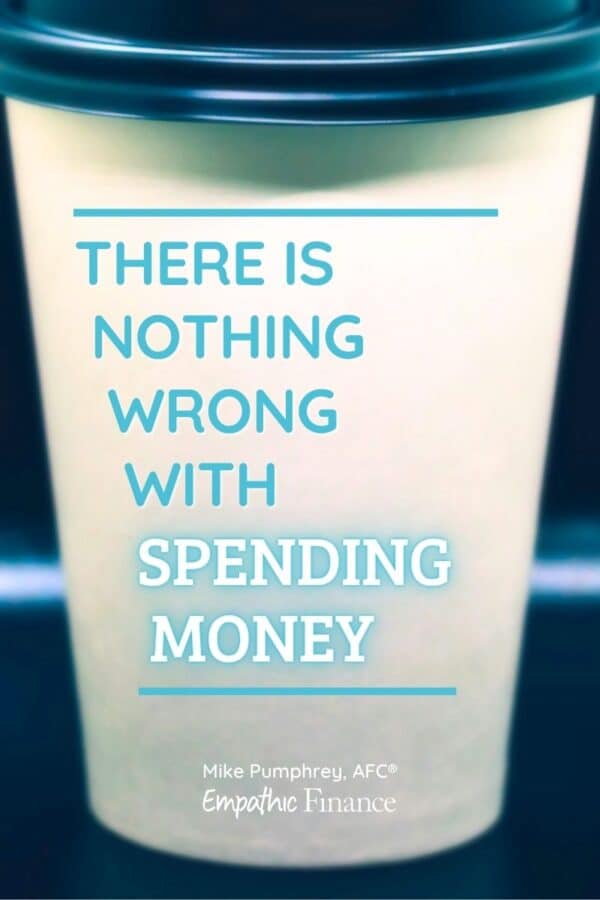Some think that becoming better with money means that they shouldn’t spend, but that’s wrong. Spending money can be enjoyable and that’s okay!
When I started this blog over 10 years ago, I spent time coming up with frugality tips. How to save money on a Costco membership. How to save money on airfare by purchasing frequent flyer miles. That sort of thing.
But over time, I realized that frugality tips were more of a distraction than an answer to financial wellness. What did it really matter if you saved $10 here or $20 there, especially if you were not making bigger money moves? How many $10 savings do you need to get to $10,000? Why not just work on the $10,000?
(I don’t mean to denigrate David Bach and his thing about how saving $4 a day will make you a millionaire, although over time, I’ve really started to doubt whether it’s accurate.)
All of this led me to basically discard frugality and minimalism as something to aspire to. I mean, it’s fine if you enjoy minimalism, but I just no longer associate it with the path to financial wellness.
The problem is that if you’re too focused on reigning in your small purchases, you can very easily get in the habit of believing that spending money is bad and it’s something that you should avoid.
And that couldn’t be farther from the truth. There is nothing wrong with spending money. Spending money is great, and it’s nothing to feel bad or ashamed about.
Table of Contents
Spending money feels good
Let’s admit: spending money can feel good. Would you disagree with that? If you take away the shame that you have been conditioned to feel, spending money on a thing or an experience can be very pleasurable.
Now, everyone is different, but I don’t believe that this scales linearly. What I mean is that a $100 purchase isn’t ten times as pleasurable as a $10 purchase. I’m not sure that there’s any direct correlation between price and pleasure at all in fact.
(Interestingly, this is actually an argument for more, smaller purchases.)
I remember during a consultation with a new client, she said, “I’m worried you’re going to take my Starbucks away!” That really struck me, because it was only partially tongue-in-cheek. There was a very real sense of being worried that financial wellness would mean going without.
And I don’t believe in that at all.
When spending doesn’t feel good
Of course, if some is good, it doesn’t follow that a lot is better. And some people struggle with impulse purchases. These aren’t purchases that feel good.
I remember another consult I had where the woman lamented that she had a closet full of expensive clothes that she never wore, but couldn’t stop herself from buying. (She later said she couldn’t afford to work with me. Hmmm.) This is a totally different category, but the messaging is mostly the same.
The goal here has a bit of a Marie Kondo-flavor to it: Spend money on what brings you joy. Reduce spending on what doesn’t bring you joy.
The important caveat to spending
All that said, while I’m here to tell you to not feel bad about spending money, especially on little things that bring you joy, I need to add an important caveat here: You should have the money first before you spend it.
It’s very easy to spend money you don’t have: just put it on a credit card. Future You might hate Past You, but that’s Future You’s problem, right?
Wrong. Spending money you don’t have is the #1 way to torpedo your financial situation. And the irony is thick here: When you spend money you don’t have now, you reduce the ability to actually have more money to spend in the future!
So, how do you know if you have the money to spend? The answer isn’t complicated, but it’s not easy: you have to track your spending.
You have a certain amount of income each month. You have a certain amount of bills each month. Everything that remains is your spending ability.
That’s not too hard to calculate. For example, if you make $4,000 a month and have $3,000 in bills, you have $1,000 remaining. Your goal in that case is to make sure that you don’t spend more than $1,000 in the month.
Now, you can dial this in better, by deciding what you prefer to spend your money on. While a daily Starbucks isn’t going to break the bank, if it means that you don’t put any savings away, maybe you want to moderate that a bit.
But the most important piece remains: have the money before you spend it.
You have my permission
Financial coaching, like financial wellness, is often associated with deprivation and doing without. But to me that is fortitude misplaced. Making plans and sticking to them is the part that requires hard work. Making sure that you have the money you want to spend takes diligence and mindfulness.
After that, I think there’s nothing wrong with spending money. And if you need my permission as a financial coach, you have it. After all, after you’ve done that work, why not reward yourself with some Starbucks?



